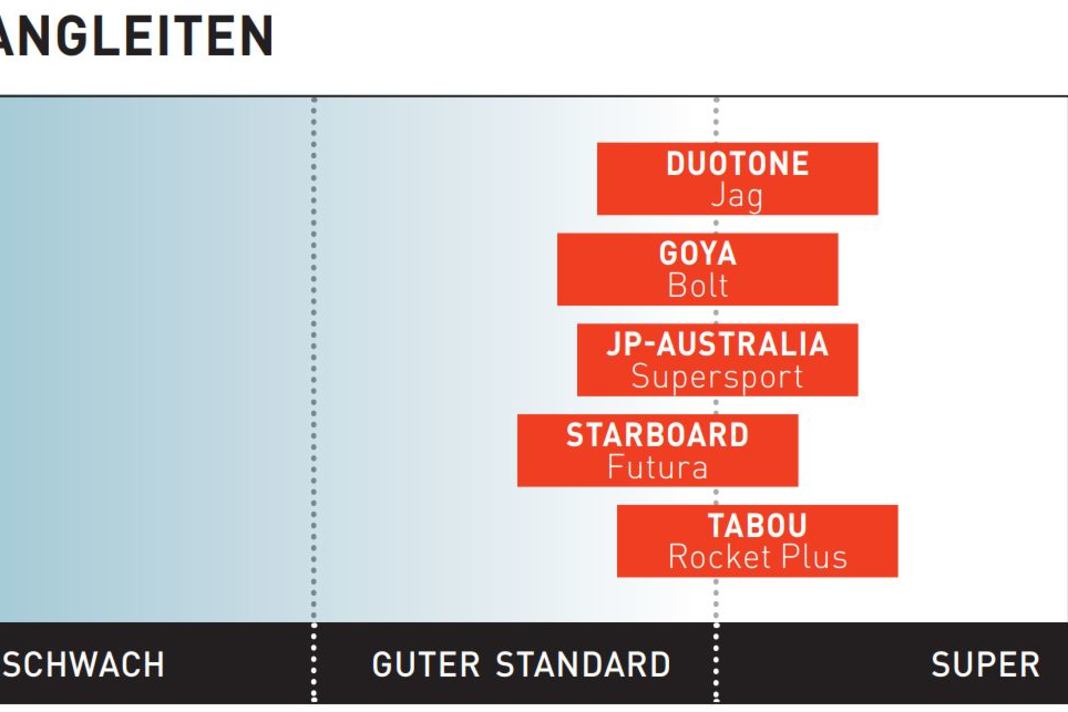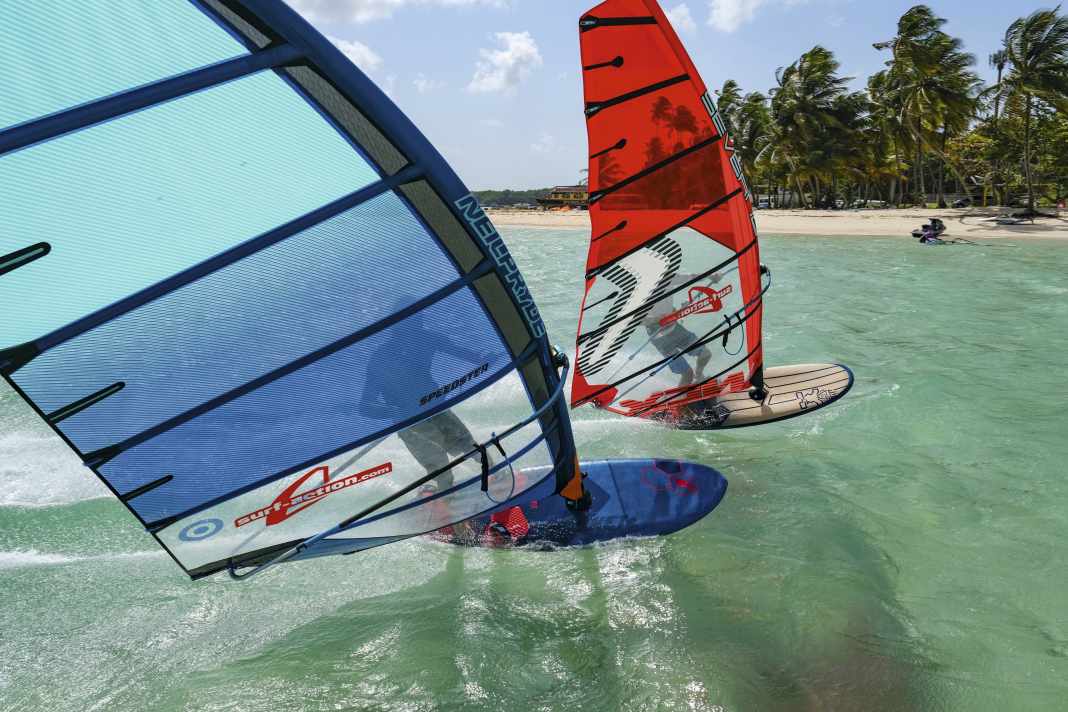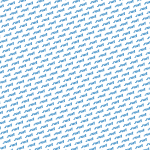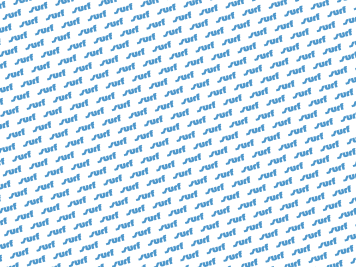These boards are included in the test:
Click to go to the individual ratings
Performance without suffering - that is the credo of this board group. In comparison to pure World Cup race slalom boards, this board group has been tweaked to minimise performance - with maximum gains in riding comfort. Less board thickness and softened rails in the tail as well as a little more length are the decisive controls - for a comfortable standing position and easier planing. The five trendy, everyday racers tested actually combine fun, performance and control in a particularly digestible mix.
The shapes that should provide speed
Wider and deeper - the mantra of dedicated car tuners is also followed by board shapers in this sporty board class. With a similar volume to freeride boards, freerace boards are predominantly shaped wider and also thinner. The volume distribution follows the silhouette of a rear-engined 911: lots of volume and thickness at the rear under the straps and a thin nose like a long, flat bonnet. Starboard follows this concept - which is extremely well realised in race slalom boards across all brands - most consistently in the Freeracer Futura. But the trend is also clearly recognisable in the other brands. If you compare the Rocket Plus 113 tested at Tabou with the Freerider Rocket 115, the sports version Rocket Plus is two centimetres shorter and 4.2 centimetres wider. Only the Goya also has a slightly thinner nose, but with a width of just 68 centimetres, it is more discreet. Goya compensates for the slightly slimmer outline with the lowest weight - as a tried and tested lubricant.
Compared to the freeride class, the shorter gliding surfaces are also noticeable. The straight range extends from 58 centimetres (JP Supersport) to 84 centimetres (Duotone Jag). In the freeride class, on the other hand, gliding surfaces up to one metre long can be found.
The performance scores were determined using two identical Neilpryde Speedster 6.7 boards in a direct comparison. The manoeuvre marks were determined by four testers after free riding with the same sail.
Equipment and construction methods
The Goya Bolt achieves the impressive 6.58 kilos with a continuous carbon sandwich in the deck and therefore appears light, but also quite crisp in choppy water. A wooden sandwich has become the standard construction method, which is invisible on JP and remains attractively visible in the bow area on Starboard. Tabou also uses a sandwich in its Team Edition construction, but with PVC foam panels in the deck, which gives it the second-lowest weight in this group.
While the Tabou pads are large but thin and firm, the Starboard pads are particularly soft and cushioning and ensure very good board contact. So good, in fact, that you should loosen your foot a little before jibing in order to slide out easily when changing feet. The Tabou straps are wider than usual in the smallest possible setting. The best markings for adjusting the size can be found in the Starboard straps. Unlike all others, the scale is printed on the correct side so that the size can be read before overlapping. Duotone does without a standard fin and offers two fins as a recommendation. The tested Duotone E/LAB is optimised for the upper speed range, alternatively the Duotone Racing should offer more comfort and planing potential in light winds.
Loop position
The broad spectrum in this group ranges from comfortable (JP Supersport) to hyperactive (Goya Bolt). And so the inside strap position is only really useful on the somewhat more harmless JP Supersport. This makes the board look like a sporty but easy-to-surf freeride board. All other, sportier candidates in this group should only be surfed with the straps on the outside. Only then can the comparatively higher performance potential - compared to the freeride group - really be unleashed.
Only with the straps on the outside are these boards faster than freeride boards."
Faster than freeriders?
We did the comparison and pitted the JP Supersport against the fastest board from the Freeride group tested. The race was damn close, with a slight performance advantage for the fastest freerider in the end. This confirmed the overlap between the two groups that the testers had suspected: The JP Supersport is easier to surf than some freeride boards, in return the two or three sportiest freeride boards (test in surf 5/2024) offer a top speed that should also allow them to compete in this freerace group.
The test grades of the freerace boards at a glance






The surf type recommendation for freerace boards
All boards are well suited for recreational racers without regatta ambitions. The Goya board is a little more challenging to surf in rough water conditions, whereas the JP Supersport is particularly easy, although this also takes away some of the lively feel of this shape.
- If you're coming up from the freeride class for the first time and don't want to challenge yourself too much straight away, a JP-Australia Supersport or Duotone Jag very good advice.
- For lively, sporty surfing even in light and medium winds Duotone Jag, Goya Bolt and Tabou Rocket Plus a particularly tinglingly free ride even without much pull in the sail.
- For long strokes in strong winds or long distance races, the Starboard Futura The new bike offers both the necessary speed and the desired control.
All freerace boards in the individual rating
Click to go to the individual ratings







